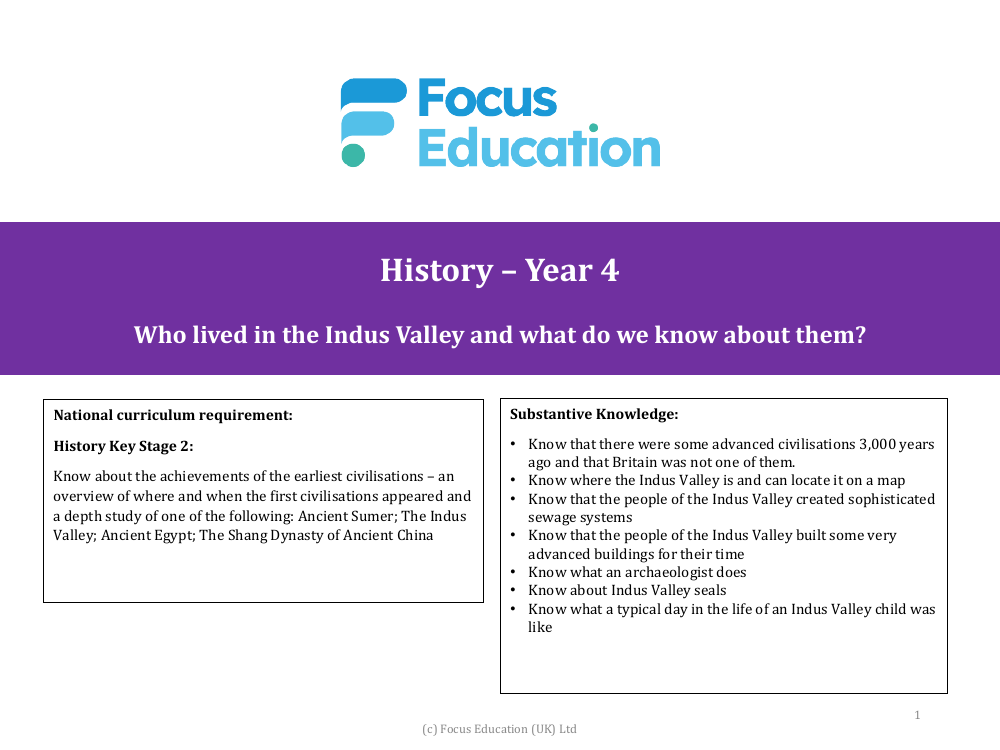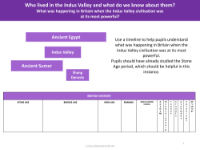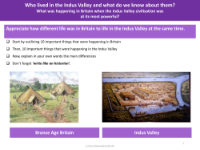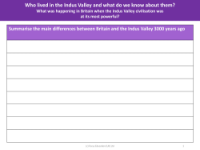What was happening in Britain when Indus Valley civilisation was at its most powerful? - Presentation

History Resource Description
The Indus Valley civilisation, which thrived around 3,000 years ago, was known for its remarkable achievements in urban planning, architecture, and early hygienic systems. During this period, the civilisation had developed sophisticated sewage systems and constructed advanced buildings that were unparalleled at the time. In contrast, Britain was not experiencing the same level of advancement. The British Isles were in the midst of the Bronze Age, transitioning into the Iron Age, where communities were primarily agrarian, with metalworking emerging as a significant craft. The contrast between the two regions highlights the varied pace of development across different societies in ancient times.
Archaeologists have played a crucial role in uncovering the past, providing insights into the daily lives of people in the Indus Valley. Through the study of artefacts such as terracotta, seals, and tools like querns, historians have pieced together the existence of a civilisation that was trading with distant lands and had a strong understanding of urban design. Meanwhile, in Britain, the population was smaller and lived in a less structured society, with fewer monumental structures and less evidence of centralised governance. The study of these contrasting civilisations forms an essential part of the History Key Stage 2 curriculum, offering pupils a chance to explore the achievements and everyday life of ancient peoples and understand the chronology of historical events on a global scale.




